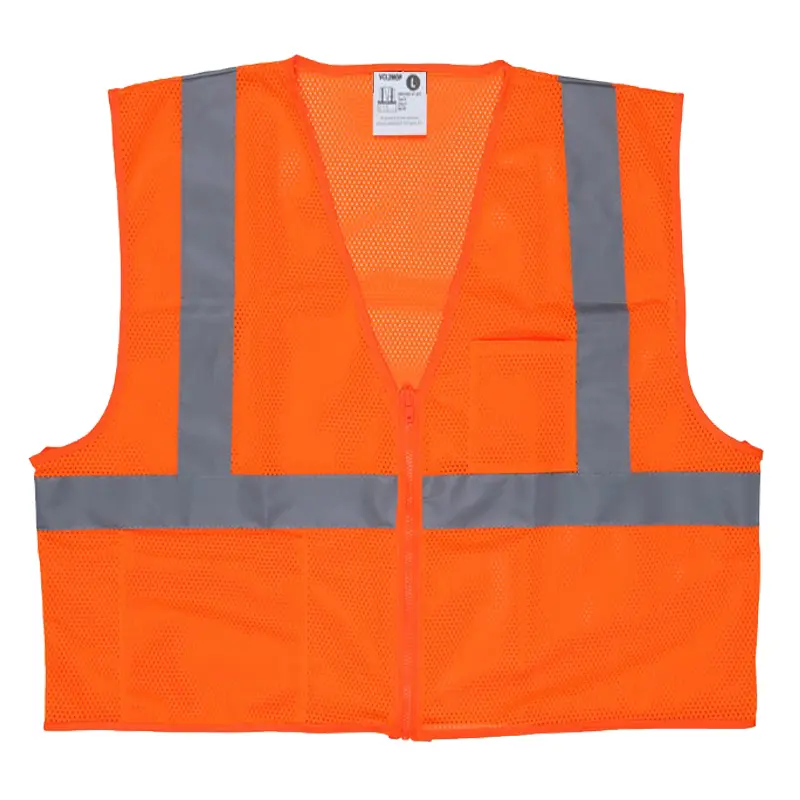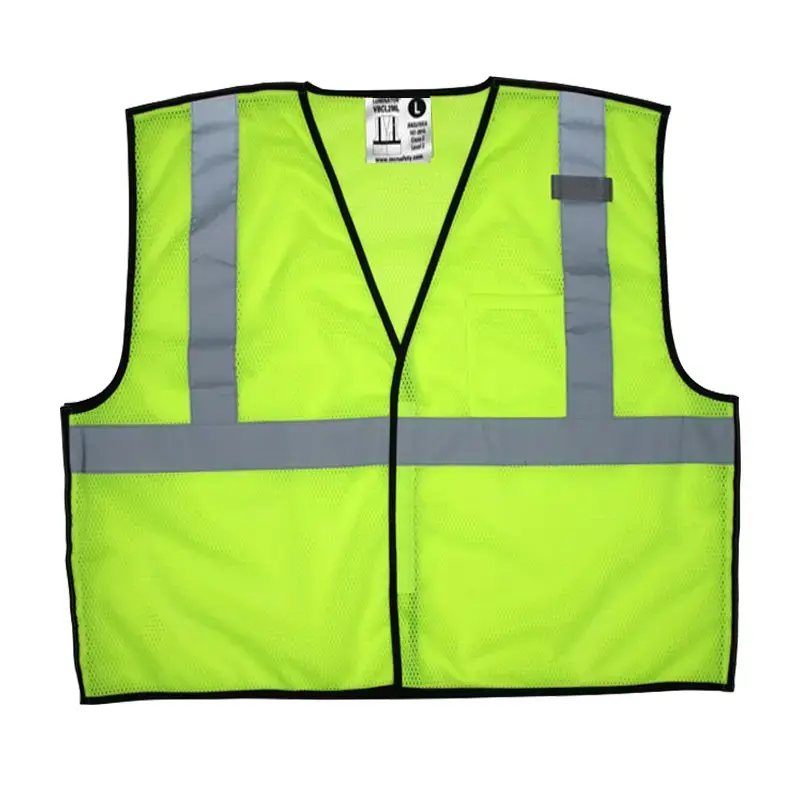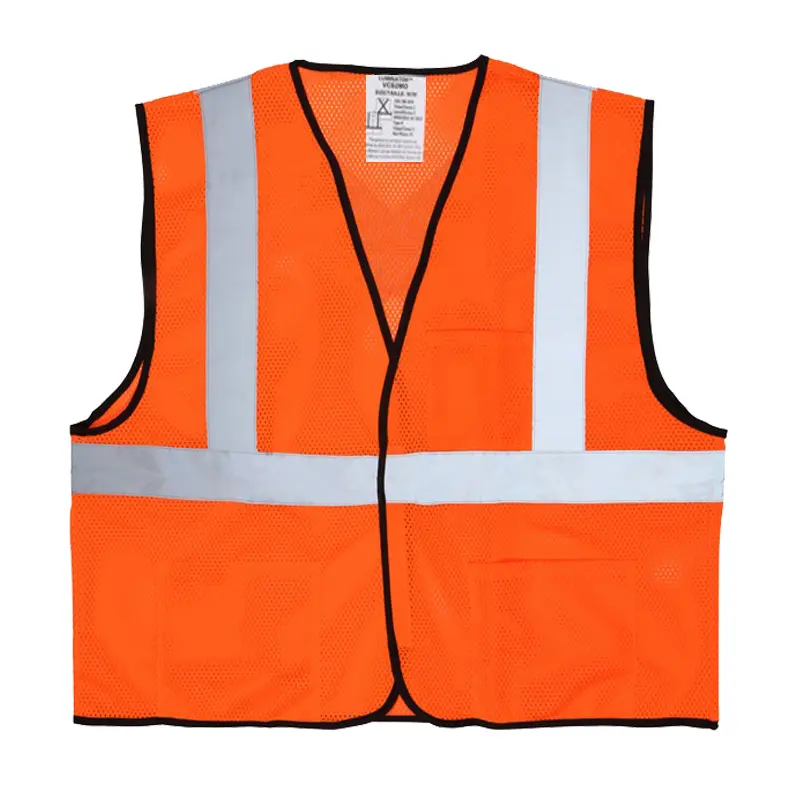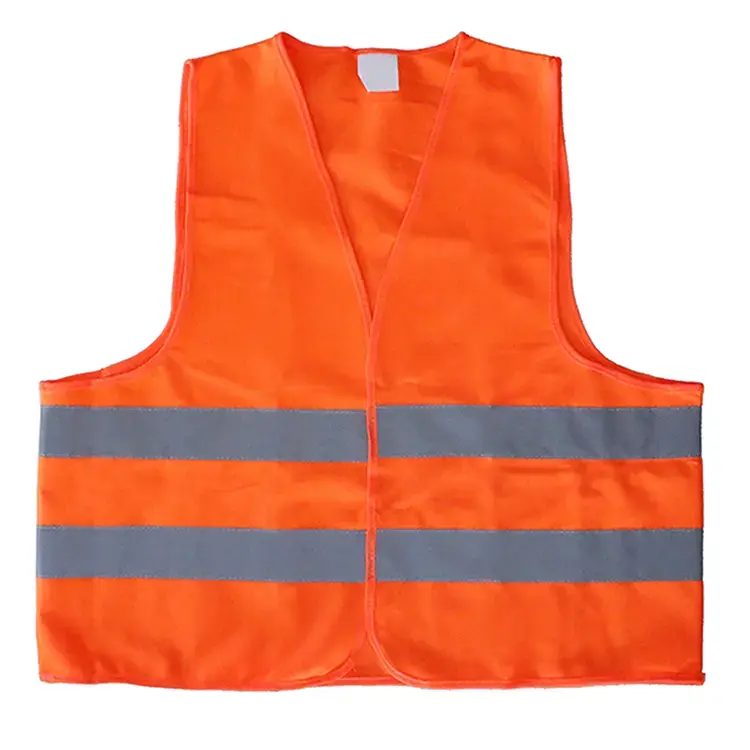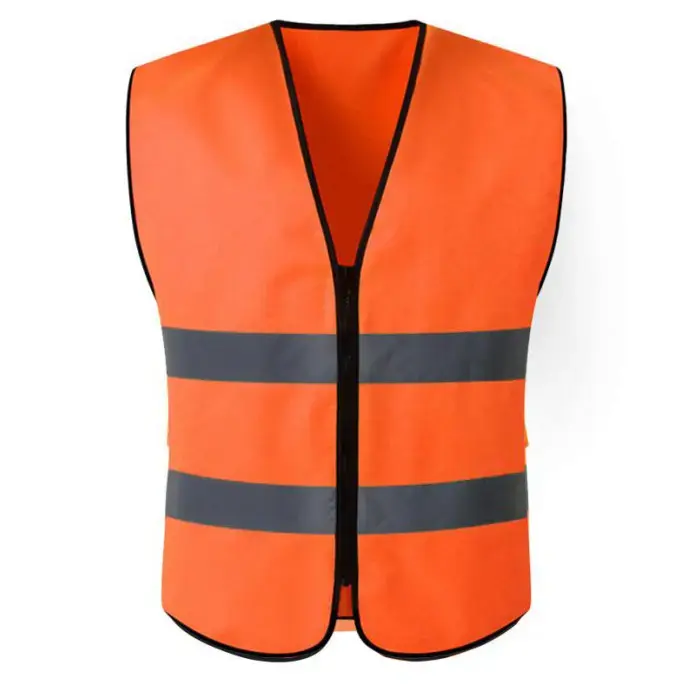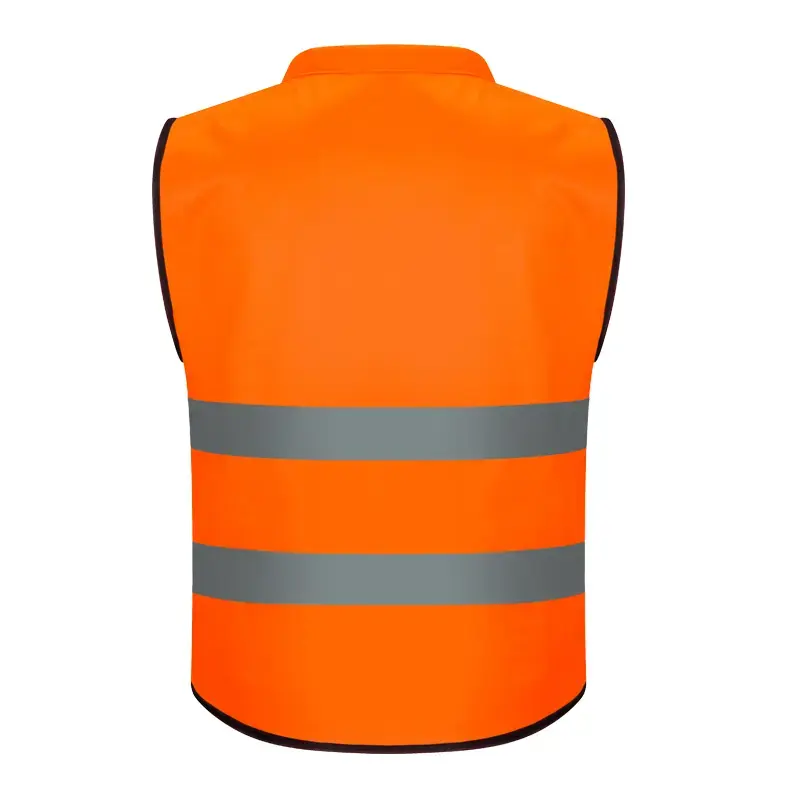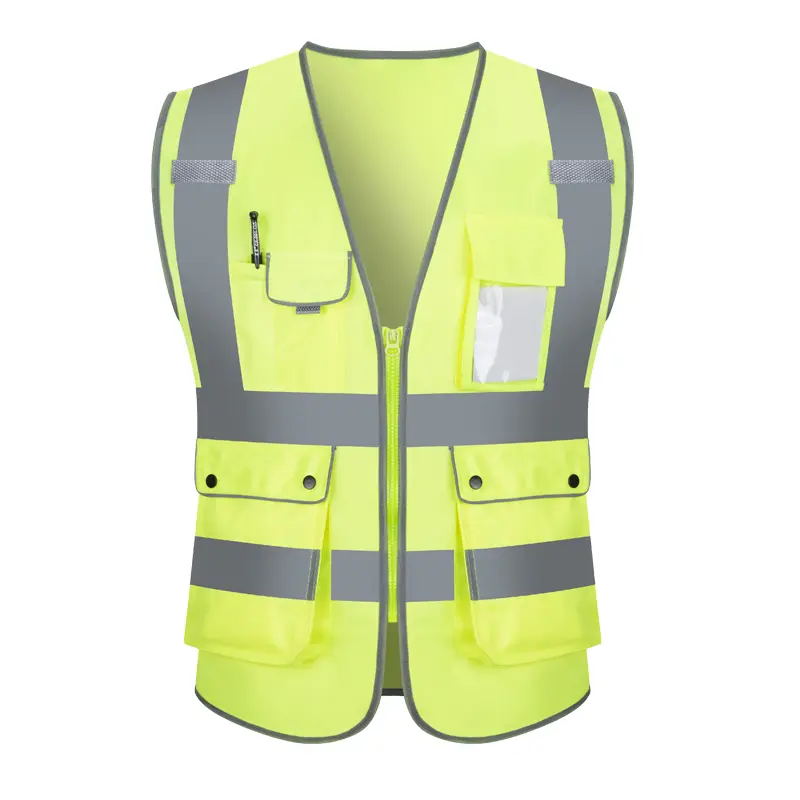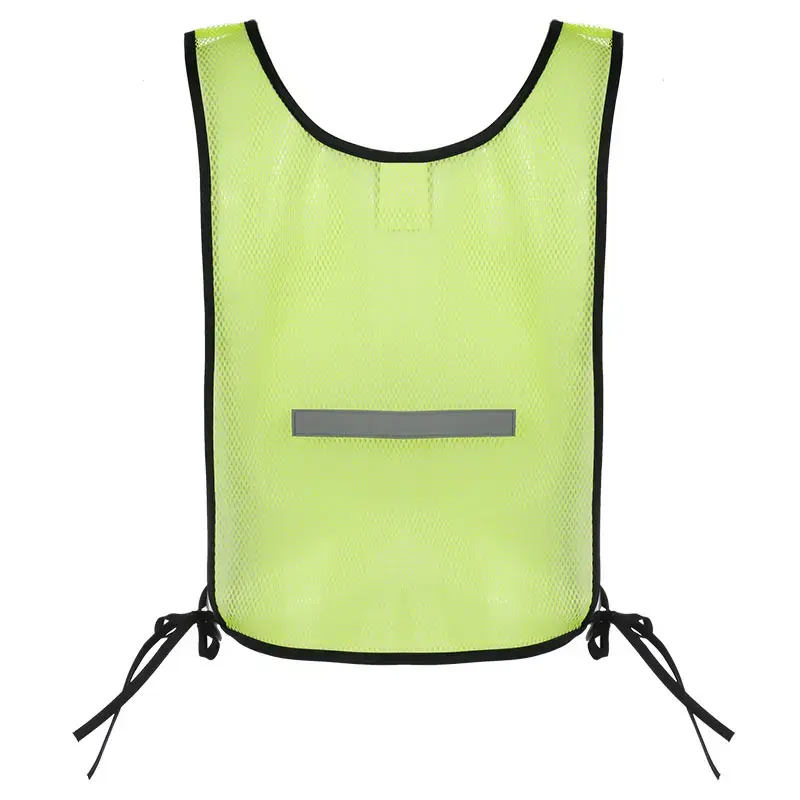Importance of Material Selection for Reflective Safety Vests
Importance of Material Selection for Reflective Safety Vests
Reflective safety vests are essential equipment in many work scenarios and outdoor activities. For international wholesale buyers, choosing the right reflective safety vest material is crucial because it is directly related to the quality, performance, service life of the product, and the comfort and safety of the wearer.
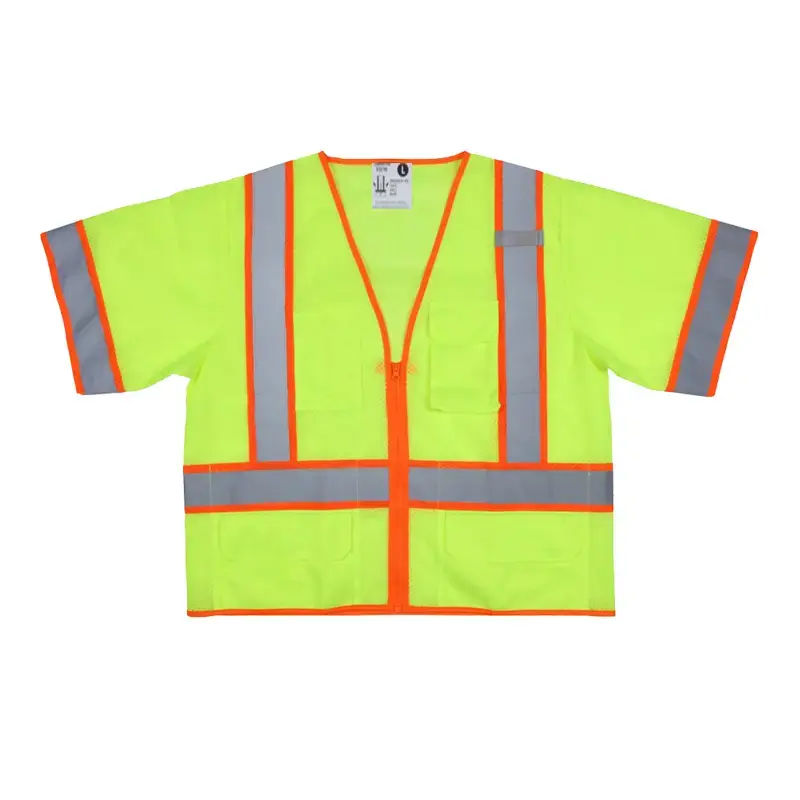

Common reflective safety vest materials and features
Polyester fiber:
Advantages: Soft texture, comfortable to wear, suitable for wearing in warm weather. It has good wear resistance and wrinkle resistance, not easy to tear, and durable. It has good color fastness, is not easy to fade, and can maintain a long service life. The price is relatively affordable.
Disadvantages: Not waterproof enough. If used in rainy or humid environments, it may cause moisture inside the vest, affecting the comfort of the wearer.
Nylon:
Advantages: High strength, good wear resistance, high tensile strength and wear resistance, can withstand large friction and tension, suitable for use in harsh environments, such as construction sites, mines, etc. It has good waterproof performance and can maintain good performance in humid or rainy environments.
Disadvantages: Poor breathability. When worn for a long time, the wearer may not be able to sweat in time, thus affecting comfort.
Cotton fabric:
Advantages: It has good breathability and moisture absorption, which can discharge the heat and moisture generated by the body in time, keep the wearer dry and comfortable, and is especially suitable for wearing in hot weather or long-term activities. It feels soft, fits comfortably, is non-irritating to the skin, and is suitable for long-term contact with the skin.
Disadvantages: Poor wear resistance, easily damaged by friction or pulling, and has a relatively short service life. It is easy to shrink and deform, and the drying speed is slow, requiring more care and maintenance.
Polyester-cotton blended:
Advantages: It combines the wear resistance of polyester and the comfort of cotton. It has good strength and wear resistance, and can maintain a certain degree of breathability and moisture absorption. It is comfortable and durable to wear. It is brightly colored, not easy to fade, and can maintain a good appearance.
Disadvantages: Compared with pure cotton fabric, its breathability and moisture absorption are slightly insufficient; and compared with pure polyester, its wear resistance and wrinkle resistance are slightly inferior.
Mesh fabric:
Advantages: It is composed of many small holes, with excellent breathability, allowing air to flow freely inside and outside the vest, effectively discharging the heat and moisture generated by the body, comfortable and cool to wear, suitable for long-term wear and use in hot and poorly ventilated environments.
Disadvantages: The material is thin and not wear-resistant enough, and it is easily damaged by friction or scratches, affecting the service life of the vest.
PVC:
Advantages: It is a synthetic material, very light and relatively affordable. It has good waterproof performance, can effectively block moisture penetration, keep the inside of the vest dry, and is easy to clean and maintain.
Disadvantages: It is not breathable, which can easily cause the body to be unable to discharge sweat when wearing it, thus affecting comfort. Moreover, it will become hard and brittle at low temperatures, which may affect the normal use and wearing experience of the vest.
Suede:
Advantages: The surface is velvety, very soft, comfortable to the touch, and non-irritating to the skin. It has good reflective effect and can better reflect light in low light conditions, improving the wearer's visibility and safety.
Disadvantages: Compared with other materials, suede vests may not be wear-resistant enough, are easily damaged, and may require more attention and care in terms of cleaning and maintenance.
Reflective materials:
Glass microbead reflective film: It reflects light through glass microbeads, and the reflective effect is good, but the durability is average, and it is easily affected by factors such as wear and scratches, resulting in a decrease in reflective performance. It is usually used in scenes with relatively low requirements for reflective performance or low frequency of use, such as general outdoor activities or short-term night operations.
Microprismatic reflective film: It reflects light through a microprismatic structure, and the reflective effect is excellent. It can maintain high-brightness reflective performance in various harsh environments and complex light, with strong durability and long service life. It is suitable for scenes with extremely high safety requirements, such as highway construction, traffic police law enforcement, mining operations, etc.
Reflective cloth: The reflective material is woven into the fabric, the reflective effect is uniform, the comfort is good, and it will not appear stiff like reflective film, which is suitable for long-term wear. However, compared with microprismatic reflective film, its reflective intensity is slightly lower. It is generally used in scenes with moderate reflective performance requirements and long-term wear, such as sanitation work, logistics handling, etc.
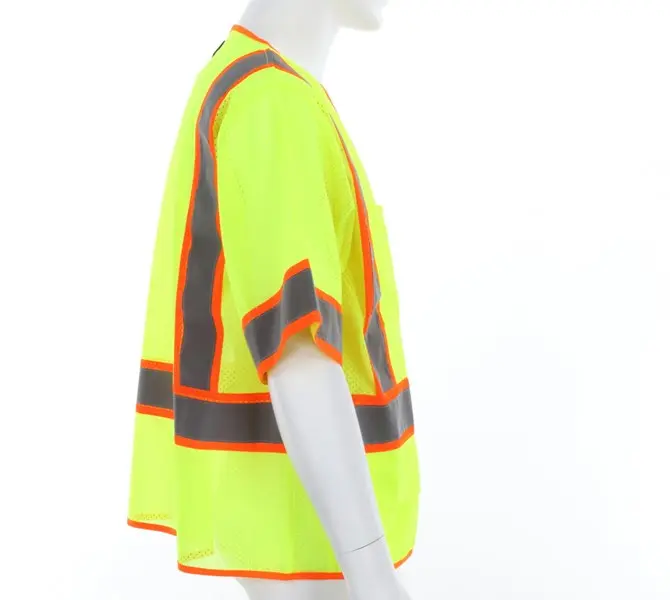
How to choose materials according to actual needs
Consider the use scenario:
General police work scenes such as daily patrols and traffic control: You can choose a Reflective Vest made of polyester fiber, which is light, wear-resistant and easy to clean to meet daily work needs.
Mission scenes in high-intensity or harsh environments: For example, mining, construction, forest operations, etc., nylon reflective vests are more suitable, and their high strength and wear resistance can withstand the test of harsh environments.
Hot, poorly ventilated environments or long-term outdoor activities: Mesh cloth or polyester-cotton blended reflective vests are a better choice, and good breathability ensures that the wearer can still remain comfortable after long-term activities.
Rainy days, humid environments or scenes that require frequent cleaning: PVC reflective vests can meet waterproof requirements, but you need to pay attention to their breathability and low-temperature performance; if you need both waterproofness and a certain degree of breathability, you can choose a reflective vest with waterproof material on the outside and good hygroscopic material on the inside.
Consider the comfort of the wearer:
People with sensitive skin: It is recommended to choose reflective vests made of cotton fabric or polyester-cotton blended fabric. These materials are more skin-friendly and can reduce allergies and discomfort.
Staff who wear for a long time: such as sanitation workers, logistics porters, etc., should give priority to materials with good comfort and good breathability, such as mesh cloth, polyester-cotton blended fabric or reflective cloth.
Consider budget constraints:
Low-cost requirements: You can choose reflective vests made of glass microbead reflective film and polyester fiber. These materials are relatively low in cost, but can also meet basic safety warning needs to a certain extent.
High budget: You can choose reflective vests made of microprismatic reflective film and nylon. Although the cost is higher, they can provide better reflective performance and durability, thereby better protecting the safety of the wearer.
Material selection and industry standards
When choosing the material of a reflective safety vest, you also need to consider relevant industry standards and regulatory requirements. For example, GB 20653-2006 "High Visibility Warning Clothing for Occupational Use" and EN ISO 20471 and other standards have clear provisions on the material performance, reflective effect, color fastness, durability and other aspects of reflective vests. When choosing suppliers and products, buyers should ensure that the reflective safety vests they purchase meet the relevant standards to ensure product quality and safety, and avoid legal risks and safety hazards caused by non-compliance with the standards.
In short, choosing the right reflective safety vest material requires comprehensive consideration of multiple factors such as usage scenarios, environmental conditions, wearer comfort, budget constraints and industry standards. Reflective safety vests made of different materials have their own advantages and disadvantages. International wholesale buyers should weigh the characteristics and applicability of various materials according to actual needs, and choose the reflective safety vest material that best suits their customers and application scenarios, so as to provide customers with high-quality, high-performance, and high-safety products to meet their use needs in different environments.

